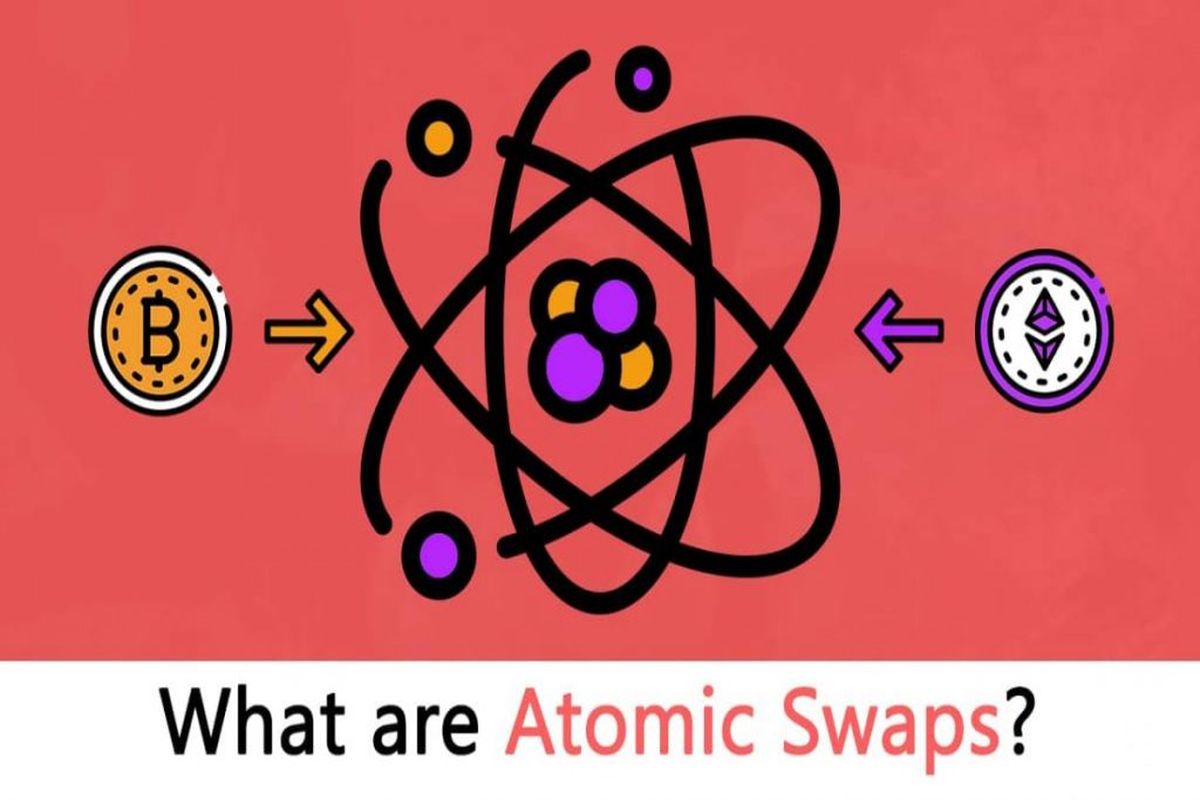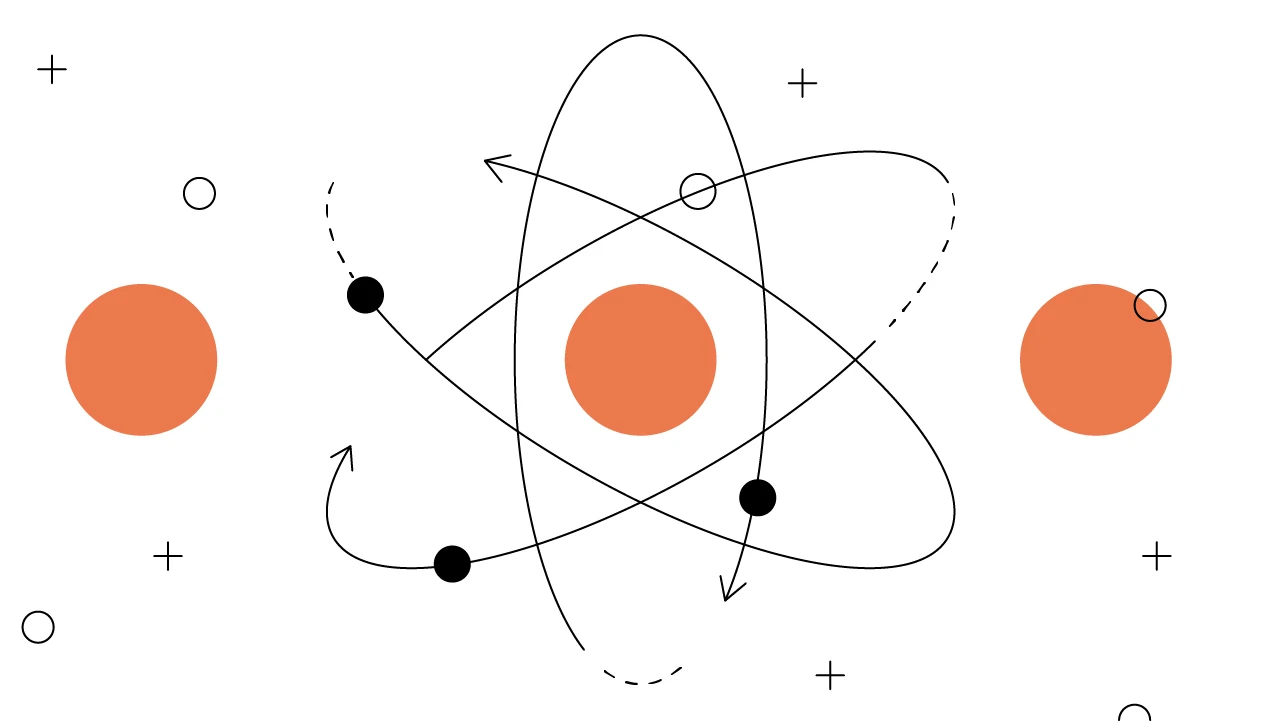The crypto space is always advancing and crypto exchanges are not left behind. In that context, atomic swaps have come up to help transact smoothly in the crypto space. These mechanisms support direct peer-to-peer exchanges between different cryptocurrencies without needing intermediaries or centralized control.
By facilitating these swaps, atomic swaps enhance a more decentralized nature of crypto exchanges.
Atomic swaps support peer-to-peer (P2P) transactions between users with different cryptos operating on two distinct blockchains. Thus, they eliminate the need for an intermediary such as a centralized exchange. Atomic swaps let users exchange digital assets as expected in self-executing smart contracts.
Centralized exchanges (CEXs) offer a trading experience that is similar to traditional stocks and fiat trading – manage trading pairs and order books, offer asset liquidity, link buyers and sellers on a platform, and guarantee fair market prices. Therefore, they are custodial and deliver centralized control since they have adequate access to user private keys.
CEXs are mostly popular with high trading volumes. Nonetheless, they contravene the decentralized ethos of blockchain and crypto. That is where decentralized exchanges (DEXs) come in to incorporate a noncustodial network. Atomic swaps support greater interoperability across different blockchain networks. They support decentralized multichain crypto exchange boosting a real decentralized finance (DeFi) realm.
Related:DeFiChain (DFI): The Native DeFi For Bitcoin Ecosystem
Atomic Swaps Importance
Atomic swaps are designed to support DeFi and resolve most of the inefficiencies linked to exchanging cryptos in the centralized finance (CeFi) space.
To exchange Ethereum (ETH) on the Ethereum blockchain and Bitcoin (BTC) on the Bitcoin network, one is needed to follow various steps while using a centralized exchange such as Binance or Coinbase.
- Register an account that supports ETH/BTC trading pair. This process may need a sign-up process and a KYC mandate, according to the CEX’s policy.
- Transfer ETH to the centralized platform.
- Change ETH to BTC and that may incur transaction fees and maybe a long waiting period.
- Withdraw the BTC to a Bitcoin wallet, which may attract another fee.
- Finally, wait for the exchange’s processing operations and the arrival of funds into the wallet.
This normal centralized exchange offers a series of steps, coupled with uneconomical fees and several potential complications. Moreover, CEXs can introduce unexpected security risks related to asset custody.
CEXs store the user funds in custodial wallets, and the exchange has full control of the private keys. In case of a security vulnerability, hack, or regulatory withdrawal freeze, users’ crypto funds are exposed to possible threats.
To resolve these issues, DEXs and DeFi support atomic swaps, which get rid of intermediaries in trading, smoothen the process and considerably mitigate many possible security risk channels for the crypto users.
Atomic Swaps Overview
Atomic swaps are also known as cross-chain atomic swaps, and they were theorized in 2013 but gained utility after 2017.
Sergio Demián Lerner, a developer, created the first version of a trustless exchange pool in July 2012. Nonetheless, an entire working paper was given in 2013 by Tier Nolan. Nolan is majorly known as the pioneer developer of atomic swaps because of his exhaustive description of the atomic swap process.
In 2017, the concept was actualized when Charlie Lee, the Litecoin founder, tweeted the historic moment of the completion of the first successful atomic swap. He managed to successfully perform a cross-chain atomic swap featuring LTC/BTC, where he changed Litecoin (LTC) into BTC.
Since that milestone was achieved, many DEXs and swaps have been leveraging this advancing technology to come up with new crypto trading solutions. Renowned decentralized exchanges and platforms that support atomic swap trading include the Lightning Network, AtomicDEX, Liquality, and many others.
How Atomic Swaps Operate
Atomic swaps operate by using smart contracts and hashlock cryptographic techniques to help secure digital asset exchanges.
‘Atomic’ describes processes that conclude successfully or do not initiate anything at all – there is no room for any other alternative. A crypto trading atomic swap suggests two potential outcomes: Either the trade was executed successfully or no action happened.
Thus, an atomic swap develops a mechanism where the two sides of the crypto trade have to satisfy all the prerequisite conditions before the trade is executed and finalized. This is made possible via the implementation of smart contracts, self-executing programs created to enforce the conditions needed for a transaction to be completed satisfactorily.
Notably, atomic swaps use hashed time lock contracts (HTLCs), described as a type of smart contract, to support secure and trustless exchanges of cryptos. Essentially, HTCLs “lock” a transaction and then demand that the involved parties authenticate the data and information before the exchange can be completed.
Atomic swap smart contracts are designed with two important components:
Timelock
The timelock infrastructure works as a deadline for a swap. It guarantees that the involved transaction is completed within a certain time, and whenever that fails to happen, it refunds the depositor. Timelock normally helps secure these transactions. Both entities have to approve the swap within the specified time limit or else the transaction is canceled and the crypto refunded to respective owners.
Hashlock
The hashlock strategy lets contracts be locked with a distinct cryptographic key that can be created only by the crypto depositor. The key, a distinct data piece, guarantees that the swap only gets finalized when all involved parties approve the transaction.
Benefits Of Atomic Swaps
By design, atomic swaps enhance blockchain interoperability and mitigate risks while giving traders increased flexibility at a low cost.
Through these atomic swaps, traders enjoy the benefits that come with decentralization and peer-to-peer trading offers autonomy on users’ funds and independence from centralized exchanges or centralized liquidity pools.
The timelock and hashlock techniques in the self-executing smart contracts utilized by atomic swaps offer traders enhanced security for their crypto funds. Traders are sure that their funds are returned in case of conflicts or delays.
Atomic swaps support the exchange for users on different blockchains. Most centralized exchanges prohibit traders from swapping all kinds of altcoins. Atomic swaps resolve this issue by letting all types of crypto to be swapped.
Related:What is Swapping in Crypto? How Can It Help Investors?
Drawbacks Of Atomic Swaps
These swaps can be technologically complex, with increased blockchain wait times that result in slow adoption rates.
Atomic swaps require exchanging information, data, and hashed cryptographs which may prove challenging for beginner investors and traders.
For the traders who want to liquidate to fiat, it can be hard since fiat-to-crypto and crypto-to-fiat exchanges are not supported on the atomic swap decentralized exchanges.
Today, several platforms support atomic swaps. Moreover, one may need particular programming skills and hash knowledge to use atomic swaps. Nonetheless, crypto wallets might integrate the technology into their software in the coming days.







